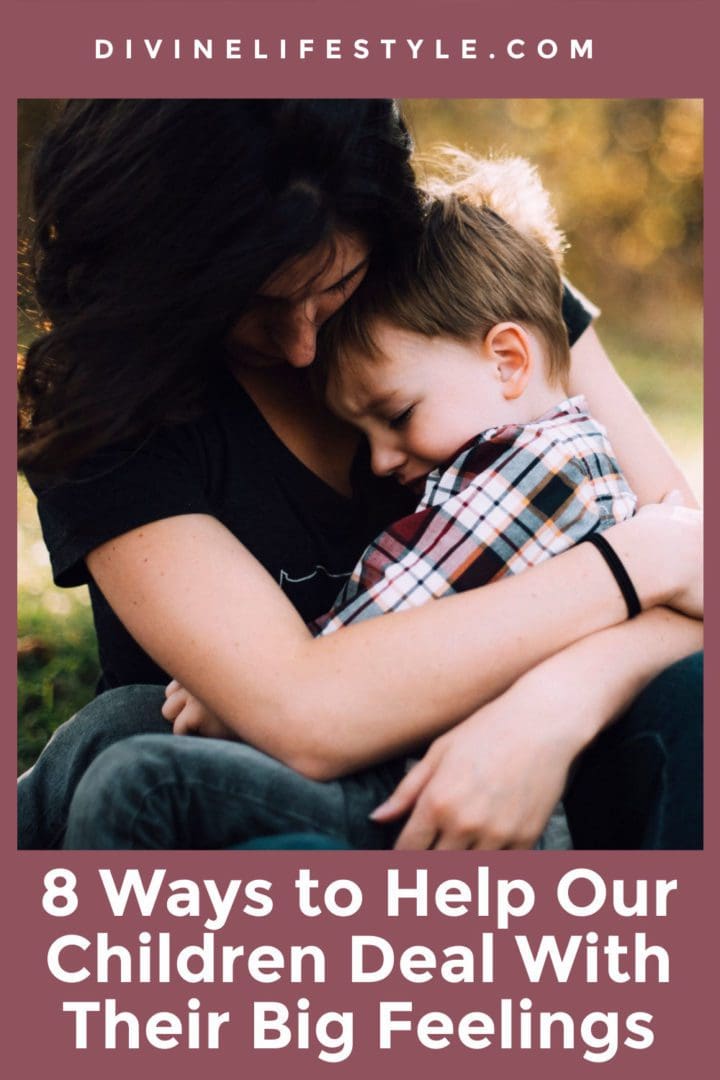How to Build Confidence in Kids
How to Build Confidence in Kids Being confident and feeling confident all of the time are not necessarily things that come easy for everyone. I know that I haven't always been a confident person...
Parents get to celebrate their child’s first steps and words, but they also have to be there when children experience a range of emotions. Kids don’t know how to process intense sadness and anger, so it’s up to their parents to guide them through each new feeling. These are eight ways to help our children deal with their big feelings so they can learn and grow through anything life has in store. We hope that you find this 8 Ways to Help Our Children Deal With Their Big Feelings post valuable.

It’s much harder to understand something if you don’t have the words for it. Little children don’t have the life experience to name depression, irritation, and rage. The first step to helping children deal with their big feelings is to identify each emotion before or after it happens. Sketch pictures on flashcards with the emotion’s name underneath. Print pictures of people having the same feeling or name what your child’s dealing with as they experience an episode. They’ll quickly relate the new word to their feelings and begin to grasp what’s happening.
Naming an emotion is important, but identifying its trigger is an equally important step for kids to take. After they’ve calmed down, trace the roots of their feelings back to what started them. Explain the concept of an event or person triggering certain recurring feelings and talk about how you go through the same things too. If they don’t feel alone or embarrassed, they’ll face their feelings more confidently next time.
Everyone wants to be understood. When your child begins to cry or get angry, resist the immediate urge to fix what’s wrong. Instead, communicate how you can understand why they’re experiencing such feelings. It creates a safe environment where they aren’t isolated. Validation creates room for conversation, which prevents kids from bottling up their emotions. Telling them to stop crying or dismissing their feelings only tells kids that they can’t dwell on and learn from their emotional state.
When children need to deal with their big feelings, sometimes talking isn’t enough. Take your child outside so they can express themselves with physical exertion and get their feelings out in a healthy manner. Running around, playing on a playset, or even jumping rope vents their frustration. They’ll return with more ability to focus on any conversations you want to use as a teaching moment.
Kids play with toys to mimic interpersonal relationships. Use those same toys to teach them about coping and communication skills. Two dolls could work through how your child feels and how you want to help them. They’re more likely to listen to their favorite toys and understand the lesson you want them to learn.
Children who love to read may develop emotional understanding better through books. Parents can review books for their child’s age range and select titles dealing with feelings through character conflicts. The books will take different approaches regarding the same emotions, so your kids may pick up more helpful lessons this way. Whether the characters are naming their feelings or even demonstrating conflict resolution, kids will remember the bright colors and fun storylines if they read them every day.
Emotional outlets are essential for people of all ages. They may change over time, but kids should know their preferred outlets at a young age. Introduce them to helpful habits to channel negative emotions, such as:
Younger children could grab some crayons and draw a picture that demonstrates their feelings. Try different habits until you find one or two that they find engaging. They have to enjoy the outlet to use it effectively. Listen to their feedback and give them new options so feelings never continuously overwhelm them with negativity.
Identifying, understanding, and working through emotions isn’t the whole journey. Kids should also reflect on their personal growth to learn how the cycle helps them. When they communicate future issues or reach for their outlet tools, point out how they’ve improved. They’ll want to stick with your advice if they feel encouraged. It’s also a key opportunity to figure out when something isn’t working. If you can’t identify growth, go back to the beginning. Ask them to name what they’re feeling and talk about where those emotions came from. They could need another lesson in identifying turbulent emotions or processing them.
Teaching your kids about their emotions is a critical part of setting them up for success. These are eight ways to help our children deal with their big feelings, but they’re only an outline. Use them with your kids to figure out what helps them the most and use these tips as stepping stones to improved personal growth. We hope that you find this 8 Ways to Help Our Children Deal With Their Big Feelings post valuable. Good luck!